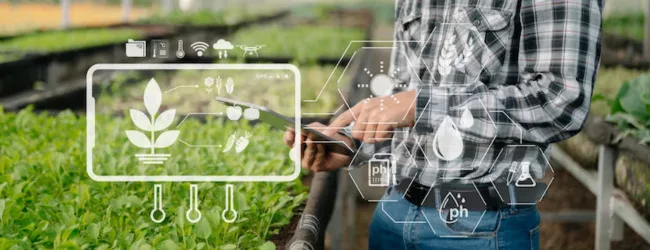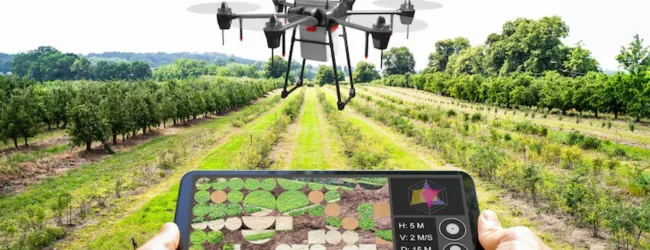Table of contents
- What Exactly is an Integrated Farming System (IFS)?
- Why is Integrated Farming System Crucial, Especially for India?
- Core Principles Guiding Integrated Farming System
- Common Components of an Integrated Farming System
- Designing Your Own Integrated Farming System
- Successful IFS Models in India: Real-World Examples
- Challenges in Adopting Integrated Farming Systems
- The Future is Integrated
- Conclusion
- Frequently Asked Questions (FAQs)
India’s agricultural landscape faces significant challenges: feeding a growing population, climate change impacts, degrading soil health, and ensuring stable income for millions of smallholder farmers. Traditional monoculture farming often struggles to address these complex issues. But what if there was a smarter, more resilient way to farm?
Integrated Farming System (IFS) isn’t just a buzzword; it’s a time-tested, holistic approach that mimics nature’s cycles to make farming more sustainable, profitable, and environmentally friendly. It’s about seeing the farm not just as a place to grow one crop but as an interconnected ecosystem.
This guide will walk you through everything you need to know about the Integrated Farming System, especially in the Indian context.
What Exactly is an Integrated Farming System (IFS)?
At its core, an Integrated Farming System (IFS) is a farming approach where different agricultural activities are combined and managed as a single, interconnected unit. Think of it like a mini-ecosystem on the farm where:
- Nothing Goes to Waste: The waste product from one activity becomes a valuable input for another.
- Synergy is Key: Different components (like crops, livestock, fish, trees) work together, enhancing overall productivity and efficiency.
- Diversification Reduces Risk: Farmers aren’t reliant on a single crop or income source.
In simple terms: Instead of just growing rice, an IFS farmer might also raise chickens, grow vegetables on bunds, have a small fish pond using runoff water, and use livestock manure to fertilize the fields and produce biogas for cooking.
This contrasts sharply with specialized farming (monoculture), where farms focus intensely on a single crop or animal, often requiring high external inputs (like chemical fertilizers and pesticides) and being vulnerable to market fluctuations or pest outbreaks.
Why is Integrated Farming System Crucial, Especially for India?

IFS offers a multitude of advantages, making it particularly relevant for India’s agricultural scenario, which is dominated by small and marginal farmers (over 86% of landholdings are less than 2 hectares).
Here are the key benefits:
- Increased Farm Income: IFS provides multiple income streams throughout the year from different components (crops, milk, eggs, fish, timber, etc.), unlike the seasonal income from monocropping. Studies by the Indian Council of Agricultural Research (ICAR) have shown that IFS models can significantly increase net returns per hectare compared to traditional cropping systems. Highlight: IFS can increase farmer profitability by 3-5 times in some models.
- Enhanced Livelihood Security: Diversification acts as insurance. If one component fails due to weather or market issues, others can compensate, reducing financial risk.
- Improved Resource Use Efficiency: Water, land, energy, and nutrients are used more effectively. For example, pond water can irrigate crops, livestock manure replaces chemical fertilizers, and crop residues feed animals.
- Better Soil Health: Integrating livestock and using organic manure (like vermicompost or biogas slurry) improves soil structure, fertility, and water-holding capacity, reducing reliance on synthetic fertilizers. [Learn more about Soil Health – External Link to FAO Soil Health page].
- Environmental Protection: IFS promotes nutrient recycling, reduces greenhouse gas emissions (through biogas units), minimizes pesticide use, and enhances biodiversity on the farm. It’s a form of climate-smart agriculture.
- Year-Round Employment: Different activities require labour throughout the year, providing steady employment opportunities for farm families and local communities.
- Nutritional Security: Integrating diverse components like vegetables, fruits, fish, eggs, and milk ensures better access to a balanced diet for the farm family.
- Waste Reduction & Recycling: Turns farm ‘waste’ into valuable resources, moving towards a zero-waste farming or circular agriculture model.
💡 Pro Tip: If you want to start farming but have too many doubts, connect with a farming expert from Boss Wallah for guidance – https://bw1.in/1116
Core Principles Guiding Integrated Farming System
Successful Integrated Farming Systems operate on a few key principles:
- Diversification: Incorporating a mix of compatible crops, livestock, and other enterprises.
- Integration & Synergy: Ensuring components work together beneficially. The output of one becomes the input for another.
- Nutrient Recycling: Maximizing the use of farm-generated organic matter (manure, crop residues) to maintain soil fertility.
- Resource Efficiency: Optimizing the use of available land, water, labour, and capital.
- Ecological Balance: Minimizing negative environmental impacts and promoting biodiversity.
Common Components of an Integrated Farming System

An IFS model can be customized based on local conditions, resources, and farmer preferences. Common components include:
- Crop Production: Food grains (rice, wheat, maize), pulses, oilseeds, vegetables, fruits, fodder crops.
- Livestock: Cows, buffaloes (for milk, draught power, manure), goats, sheep (meat, milk, manure).
- Poultry: Chickens, ducks (eggs, meat, manure). Ducks can also help control pests in rice paddies.
- Fishery/Aquaculture: Rearing fish in ponds, tanks, or even integrated with rice cultivation (rice-fish system). Pond silt can be used as fertilizer.
- Agroforestry: Integrating trees (for timber, fruit, fuel, fodder) with crops or livestock. Trees help prevent soil erosion and improve microclimate.
- Mushroom Cultivation: Uses agricultural residues (like paddy straw) as a substrate.
- Apiculture (Beekeeping): Provides honey and improves crop pollination.
- Biogas Production: Anaerobic digestion of animal manure and other organic waste produces methane gas (for cooking/lighting) and nutrient-rich slurry (excellent organic fertilizer).
- Vermicomposting: Using earthworms to convert organic waste into high-quality compost.
Designing Your Own Integrated Farming System
Setting up an IFS requires careful planning:
- Assess Your Resources: Evaluate land size and type, soil health, water availability (rainfall, irrigation), existing infrastructure, labour availability, and financial capacity.
- Analyze Climate & Location: Understand local climate patterns, agro-ecological zone, and proximity to markets.
- Identify Suitable Enterprises: Choose components that are compatible with each other, suited to local conditions, and have market demand. Start small and gradually add components.
- Plan the Layout: Design the farm layout to facilitate easy movement of resources (e.g., locating livestock units near fields for manure transport or near the biogas plant).
- Focus on Integration: Plan how the different components will interact and support each other (e.g., fodder crops for livestock, manure for biogas/compost, pond water for irrigation).
- Seek Knowledge: Learn about the specific management practices for each chosen enterprise. Consult agricultural extension services or experienced farmers. [Link to ICAR website or State Agricultural University website – External Link].
Successful IFS Models in India: Real-World Examples

India has seen numerous successful implementations of IFS, often promoted by ICAR and State Agricultural Universities.
- Rice-Fish-Poultry System: Common in eastern and southern India. Fish are raised in paddy fields or adjacent ponds. Poultry droppings fertilize the pond/field. This diversifies income beyond just rice.
- Crop-Livestock-Biogas Model: Widely applicable. Crop residues feed livestock. Manure goes into a biogas plant, providing cooking fuel and nutrient-rich slurry for fields, reducing reliance on LPG and chemical fertilizers. For example, a farmer with 2-3 cows can generate enough biogas for a small family’s cooking needs.
- Horticulture-Based IFS: Integrating fruit orchards (mango, guava) with intercrops (vegetables, pulses), along with small livestock units (goats, poultry) and vermicomposting. Suitable for many regions.
- Coastal IFS Models: Integrating paddy or coconut cultivation with brackish water fish/prawn culture and livestock (ducks, goats) adapted to coastal conditions.
- Hill Agriculture IFS: Combining terraced crop cultivation (maize, vegetables) with livestock (goats, poultry), agroforestry (fodder trees), and rainwater harvesting.
Highlight: ICAR has developed region-specific IFS models demonstrating significant increases in productivity and profitability across India. For instance, models developed for marginal farmers have shown potential to double or even triple net income compared to traditional farming.
| IFS Model Example (Region) | Key Components | Key Benefits Highlighted |
| Rice-Fish-Poultry (Eastern India) | Rice, Fish (in paddy/pond), Ducks/Chickens | Diversified income, pest control by ducks, manure recycling |
| Crop-Livestock-Biogas (Plains) | Wheat/Maize/Rice, Cows/Buffaloes, Biogas Unit | Fuel self-sufficiency, organic manure, stable milk income |
| Horti-Livestock (Semi-Arid) | Fruit Trees, Vegetables, Goats, Vermicompost | Year-round income, soil improvement, drought resilience |
| Coastal Paddy-Fish (Coastal) | Saline Tolerant Rice, Brackish Fish/Prawn, Ducks | Utilizes saline areas, diversified protein source |
Challenges in Adopting Integrated Farming Systems
Despite the benefits, IFS adoption faces hurdles:
- Knowledge & Skills Gap: Managing multiple enterprises requires diverse knowledge and technical skills.
- Initial Investment: Setting up components like livestock sheds, fish ponds, or biogas units can require upfront capital, although many components can be phased in.
- Labour Intensity: IFS can sometimes be more labour-intensive, especially initially, compared to specialized farming.
- Market Linkages: Farmers need access to markets for diverse products (milk, eggs, fish, vegetables), which might be challenging in some remote areas.
- Complexity in Management: Balancing the needs and interactions of different components requires careful planning and management.
Government schemes and extension services play a crucial role in providing training, subsidies, and market support to overcome these challenges.
ALSO READ | Vertical Farming in India: Definition, Types and More
The Future is Integrated

In an era demanding sustainable food production and resilient livelihoods, the Integrated Farming System offers a compelling pathway forward for Indian agriculture. It aligns perfectly with national goals like doubling farmers’ income, promoting organic farming, ensuring nutritional security, and building climate resilience.
By embracing IFS, farmers can move towards a more profitable, ecologically sound, and self-sufficient farming model. It’s not just a method; it’s a philosophy of working with nature, not against it.
ALSO READ | Different Types of Farming: Top Sustainable Practices for 2025
Need Expert Guidance?
Starting a business can be challenging, but you don’t have to do it alone! At Boss Wallah, our 2,000+ business experts are ready to provide valuable insights and guidance. Whether you need help with marketing, finance, sourcing, or any other area of any business, our business experts are here to help you succeed: https://bw1.in/1116
Confused about Which Business to Start?
Want to start your own business but unsure which one to choose? Explore Boss Wallah, where you’ll find 500+ courses by successful business owners, featuring practical, step-by-step guides on starting and growing various businesses.
Find your perfect business idea today: https://bw1.in/1111
Conclusion
The Integrated Farming System (IFS) is a powerful approach that transforms farms into dynamic, self-sustaining ecosystems. By cleverly combining diverse agricultural activities like crop cultivation, livestock rearing, aquaculture, and agroforestry, IFS enables farmers, especially smallholders in India, to:
- Boost their income through multiple revenue streams.
- Reduce financial risks associated with relying on a single commodity.
- Improve resource efficiency by recycling waste into valuable inputs.
- Enhance soil health naturally.
- Protect the environment and contribute to climate resilience.
While challenges exist in terms of knowledge and initial investment, the long-term benefits for farmer livelihoods and environmental sustainability are undeniable. IFS is not just a farming technique; it’s a vital step towards a more secure and sustainable future for Indian agriculture.
Frequently Asked Questions (FAQs)
Q: What is the main difference between Integrated Farming System (IFS) and Mixed Farming?
A: While both involve multiple enterprises, IFS emphasizes the synergistic integration and resource recycling between components, where the waste of one becomes the input for another. Mixed farming might just involve having different activities on the same farm without necessarily optimizing their interactions.
Q: Is IFS suitable for small and marginal farmers in India?
A: Absolutely. IFS is particularly beneficial for small farmers as it maximizes productivity from limited land, diversifies income, reduces reliance on costly external inputs, and improves household nutritional security. Many successful IFS models are designed specifically for small landholdings (1-2 hectares or less).
Q: What are the most common components integrated into an IFS?
A: Common components include crops (cereals, pulses, vegetables, fodder), livestock (cows, buffaloes, goats, poultry), fishery (fish farming in ponds), agroforestry (trees), vermicomposting, and biogas production. The specific combination depends on local conditions and resources.
Q: How does IFS help the environment?
A: IFS promotes environmental health by reducing the need for chemical fertilizers and pesticides (through manure use and biodiversity), conserving water, improving soil health, reducing waste, lowering greenhouse gas emissions (via biogas capture), and enhancing biodiversity.
Q: Is setting up an IFS expensive?
A: There can be initial costs for specific components (like a biogas unit or pond digging). However, farmers can start small, integrate components gradually, and utilize locally available resources. Many government schemes also offer subsidies for components like biogas plants or vermicompost pits.
Q: Are there government schemes in India to support IFS?
A: Yes, various central and state government schemes under bodies like the Ministry of Agriculture & Farmers Welfare, ICAR, and NABARD often support components integral to IFS, such as organic farming promotion (PKVY), livestock development (National Livestock Mission), fisheries development (PMMSY), and biogas promotion (New National Biogas and Organic Manure Programme – NNBOMP). It’s best to check with local agricultural departments for specific schemes.
Q: What are the main challenges in implementing IFS?
A: Key challenges include the need for diverse knowledge and skills, potential initial investment costs, managing multiple enterprises effectively, ensuring market access for varied products, and sometimes higher initial labour requirements.
Q: How does IFS contribute to doubling farmers’ income?
A: IFS directly contributes by providing multiple income sources throughout the year, reducing cultivation costs (less spending on fertilizers/pesticides), increasing overall farm productivity per unit area, and adding value through activities like biogas production or composting.


